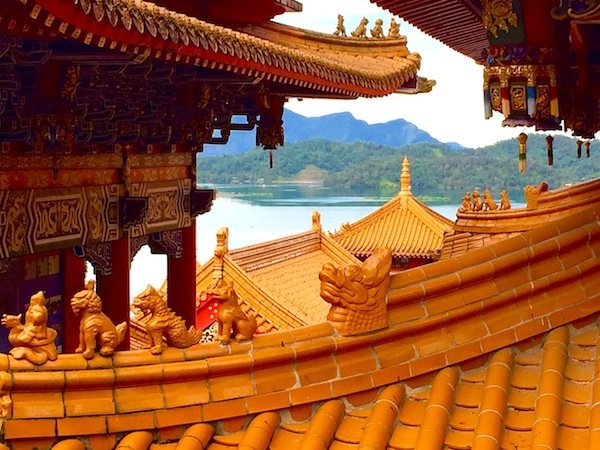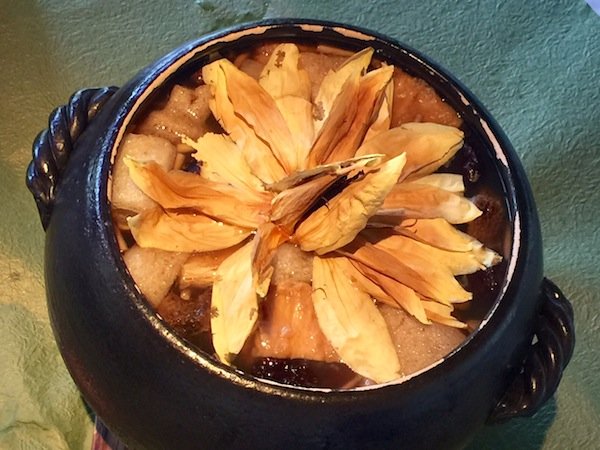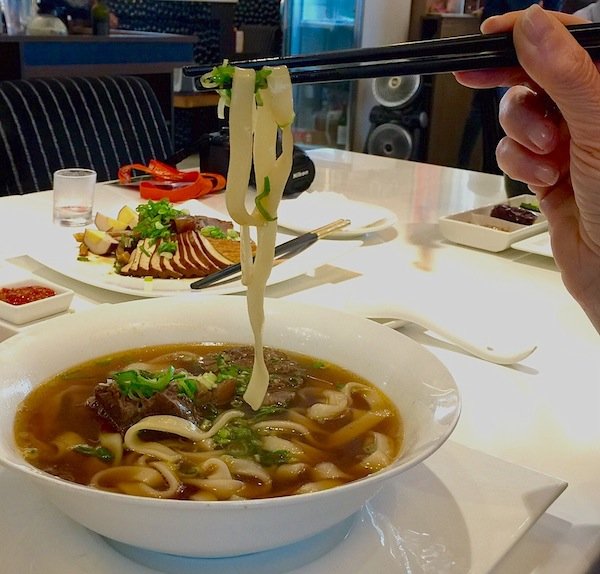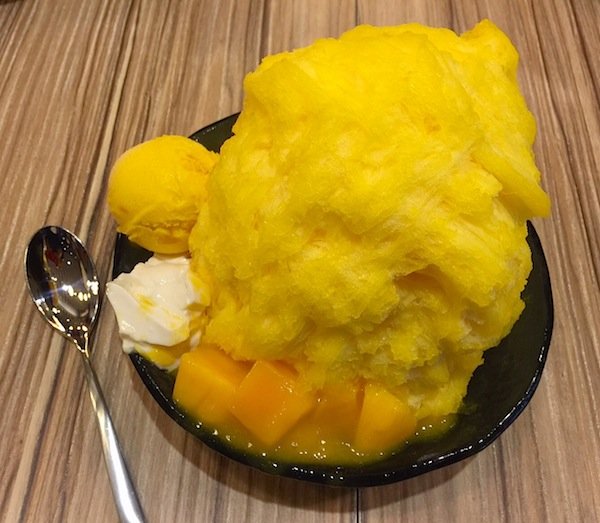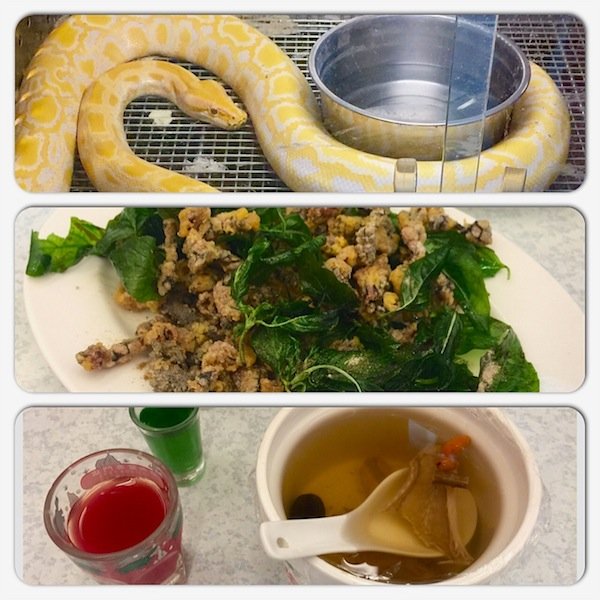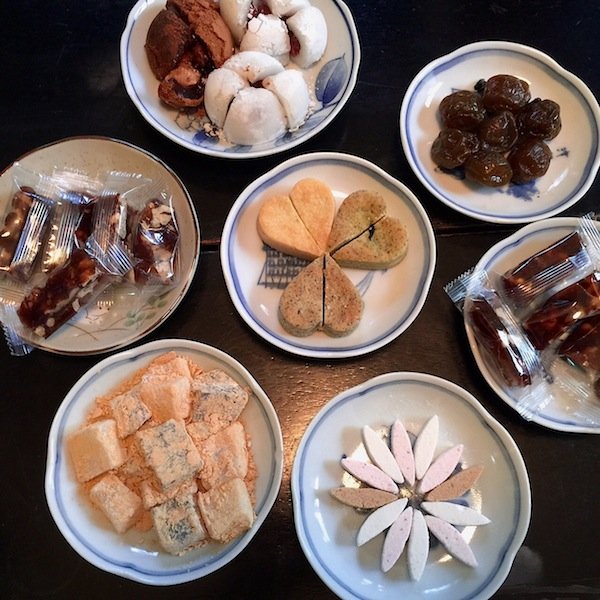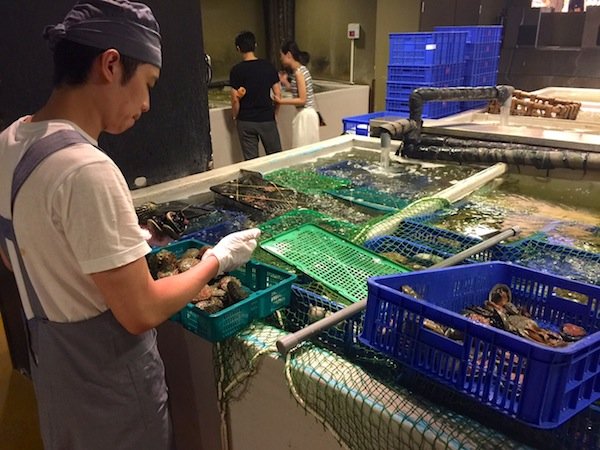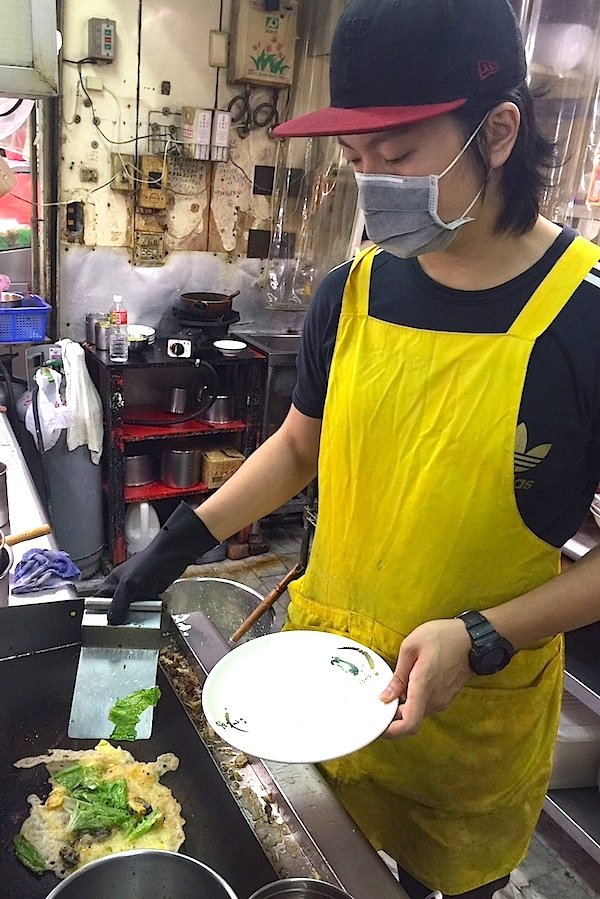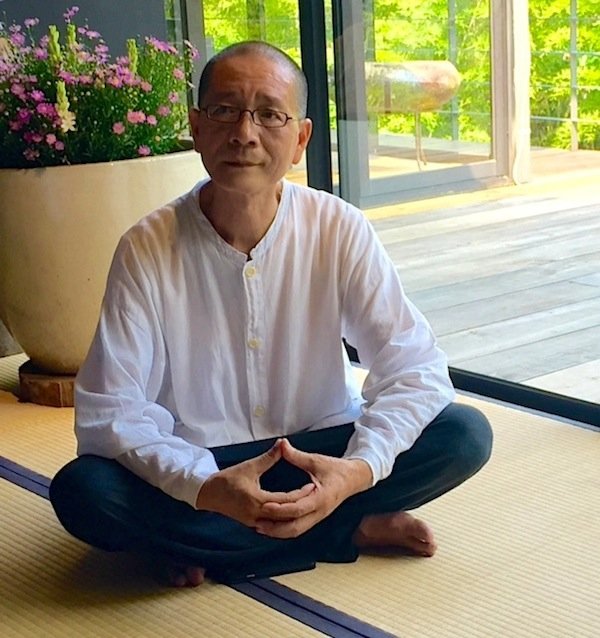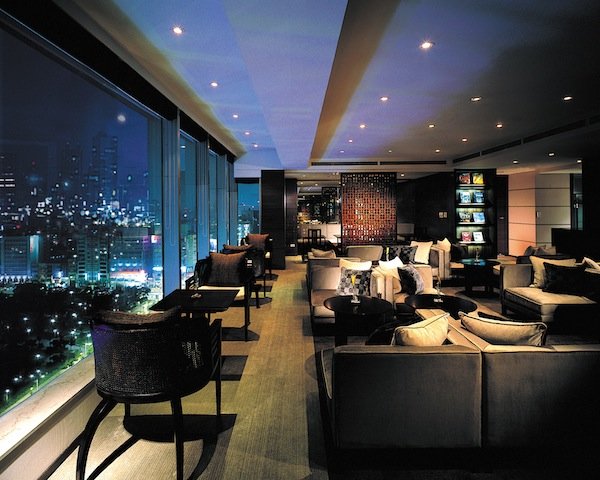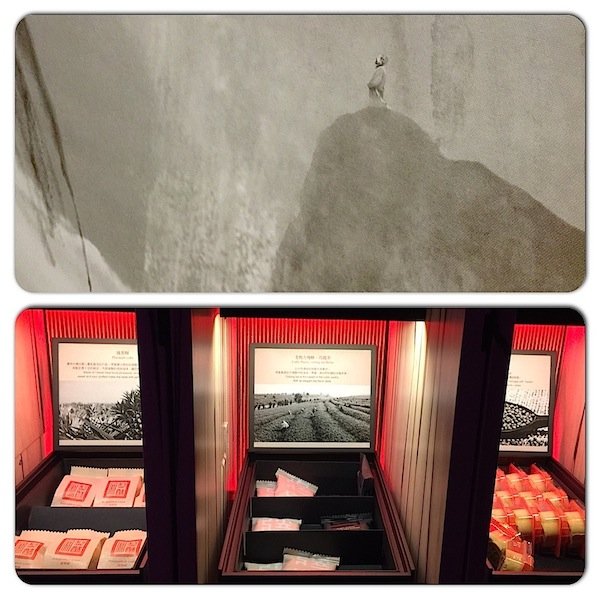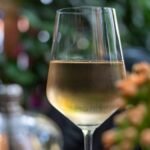
Taiwan’s Top 12 Taste Treats: From the Sublime to the Ridiculous
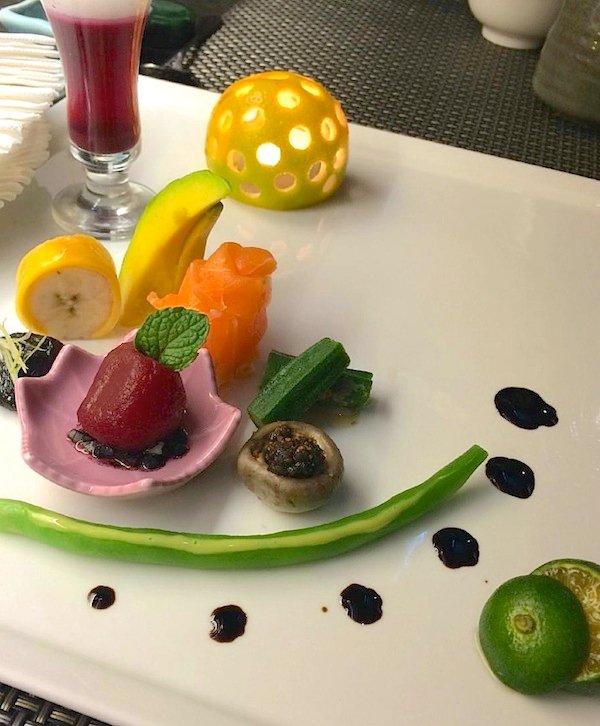
Taiwan still remains largely undiscovered, particularly by Western travelers, but this seriously underrated, economically successful (it has become one or the world’s richest countries in less than fifty years) democratic little island is poised to nab the title of “Best Hidden Travel Gem of 2015.”
Visitors will be blown away by the country’s eight pristine national parks, majestic Buddhist temples, line-up of spectacular festivals, which range from the traditional Dragon Boat Festival to the Fat Pig Festival, plethora of modern designer shopping malls, the 150 natural hot springs (and many luxurious spa resorts) and the overwhelming friendliness of the people.
But I was there first and foremost for the food, since truly knowledgeable foodies consider Taiwan the ultimate food destination for Asian cuisine. The island is a fabulous culinary mash-up due in part to the fact that the Portuguese, Dutch, Spanish and Japanese have all settled here at one time, layered with a fusion of distinctive regional Chinese styles of cooking from the Fujian, Cantonese, Szechwan and Hakka communities.
Here are a dozen of foodie favorites:
From the sublime: countryside, Zen version of The French Laundry
If you’re in a hurry you might want to bypass Shi-Yang Culture Restaurant, which requires a minimum of two to three hours to fully appreciate the innovative prix-fixe 10-course meal. After a 45-minute drive from bustling Taipei you’ll arrive at the lush Yangmingshan National Park where Mr. Lin Bin-hui, previously an acclaimed architect/designer, realized his vision of creating a culinary mountainside retreat.
The organic Zen-like restaurant was inspired by his appreciation of the Song Dynasty, 10th century China. His creative cuisine focuses on reinterpreting traditional foods with an eye to refined beauty and a nod to a more health-conscious diet by focusing on the highest quality seasonal ingredients.
A seafood still life of sashimi, sea urchin, shrimp, squid, and rice paper-wrapped rolls topped with salmon roe was so beautifully presented that we hesitated (for at least a full ten seconds) before digging in. However, the pièce de résistance appeared to be just a simple black cauldron of chicken soup until the waiter gently placed a large lotus blossom on top which dramatically unfolded over the next several minutes due to the hot steam.
After lunch a short stroll through the tranquil forest surroundings, brings you to Shi-Yang’s teahouses, where a tea ceremony can be pre-arranged.
Inside tip: To avoid disappointment, reservation should be made months in advance.
To the ridiculous-but oh so fun!
The Modern Toilet restaurant chain is the epitome of tastelessness but if you thought the movie, There’s Something About Mary, was funny, than you’ll love it here.
Each restaurant is slightly different but most have bathtub tables, showerheads or plungers hanging from the ceilings, feces-shaped pillows; toilet paper dispensers dispense napkins. Instead of chairs you’ll be sitting on artsy toilets, eating out of mini-toilet bowls, urinals or bedpans.
Menu offerings include swirled piles of chocolate Poo Poo Ice cream (the pink berry flavor is Hemorrhoid!) or you might want to choose one of the meal specials such as Meal B: Drink + soup + shit ice cream
Inside Tip: The Mac & Cheese with mushrooms was actually quite tasty.
Best no frills way to start the day: our home-style breakfast
Although the décor of the bare bones Fu Hang Dou Jiang, tucked away upstairs in the HuaShan Market Building may leave something to be desired, their carbo-heavy food might be the world’s best cure for jet lag. As you join the perpetual queue, you’ll pass the open kitchen where you can watch the Taiwanese version of “time to make the donuts” as bustling bakers churn out shao bing, a chewy sesame flat bread cooked in a fiery hot barrel, and tiao, deep-fried Chinese crullers served with sweet or savory soy milk. For a delish, all-in-one takeaway brekkie order, the sao bing youtiao (thin flatbread with Chinese doughnut and egg).
Most unusual wine pairing:
Taiwanese are obsessed with beef noodle soup, which much like our chicken soup is quintessential Taiwanese comfort food. From the most expensive restaurant to a makeshift alley cart, everyone wants to be known for serving the best beef noodle soup. Noodle Cuisine (Tel: (02) 2741-6299) is certainly a strong contender.
Owner Wu Zanhao was originally a decorator, which is evident in his styled-out restaurant laden with Swarovski crystal chandeliers. In 2011, he participated in the Taipei International Beef Noodle Festival, placing 8th in the Creative category. The signature dish here, World-Class Selections Beef Noodles Soup, has three cuts of beef: tendon, shank and tail, Wu likes to pair this with a most unique beverage: a bottle of Onion Red Wine.
Best place to cool off:
The Ice Monster offers the quintessential Taiwanese-style shaved ice dessert consisting of a humongous pile finely shaved ice (think powdered snow) topped with a variety of sweets, beans, tapioca bubbles, jellies, and fresh fruit. They have a special machine that shaves the ice in a quick circular motion, producing a pile of fluffy powdered snow. The hands down fave is their refreshing mango “avalanche,” consisting of mango flavored shaved ice piled high with fresh mango cubes, pudding, sweetened condensed milk, mango jelly, with a mango ice cream snowball perched on top.
Bragging rights: there’s nothing like a snake dinner to separate the boys from the men.
Three-way snake dinner
To try a full range of snake (as in cobra) delicacies, head to Snake Alley, formally known as Huaxi Street Night Market. The snake meat can be “enjoyed” in a variety of dishes. We manned up with a full serpent feast consisting of snake soup, snake sautéed with water spinach and fried snake skin paired with our choice of snake bile, venom or blood wine.
Worst first date dinner:
When the stench of burning rubber mixed with rotting garbage and a little sewage first assails your nostrils, you’ll know you are in the right place to buy some Stinky Tofu. This Taiwanese staple begins life innocuously enough as fresh white tofu, which is then fermented in vats of brine (often made from fermented milk, vegetables, and meat) until it reaches just the right stench of ripeness. Street vendors will then deep fry it until crispy and serve it with some equally smelly sour pickled veggies. Non-foodies will give it a wide birth, but I have to tell you, I really liked the stuff — but I’m also a fan of Limburger cheese. Once you make peace with the smell the yin/yang of the crunchy exterior and silken inside and sweet and sour flavor profile can be highly addictive.
Stinky tofu can be found at most any night market stand or you can try over 20 different vegan varieties at Jiaziyuan Restaurant in New Taipei City.
Insider tip: There’s almost nothing worse than stinky tofu breath. One helpful breath freshener, “Watering KissMint” chewing gum, can be bought at any of Taiwan’s 5,000+, 7-Eleven stores. These convenience stores sell everything from hot dinner and concert tickets, to a bottle of Johnny Walker, and they’ll even mail your packages.
Best work of art veggie alternative:
Vegetarians will have an easy time in Taiwan with its 6,000 vegetarian-friendly restaurants. But even the most ardent meat eater will be tempted to turn veg-head after trying the vegetarian Kaiseki haute cuisine at the elegant Yu Shan Ge. No matter which set menu you order you are in for a creative culinary experience that is seldom seen in vegetarian dining. The artistically presented meaty hedgehog mushroom was as satisfying as any Wagyu steak, and the stylized platter of cold appetizers had some sort of pink agar that I would have sworn was cured salmon. Plates were artistically garnished with living plants, mini-rock gardens or candles nestled inside cutout oranges.
Worst kept secret: XiaoLongBao
Din Tai Fung’s renown culinary empire (two of its Hong Kong stores have been awarded a Michelin Star) got off to a slow start as a cooking oil shop in Taiwan in 1958. When sales began to dwindle owner Yang Bingy and his wife started selling XiaoLongBao, steamed soup dumplings on the side and the rest is history. Now no trip to Taipei is complete without slurping down their succulent soup dumplings accompanied by assorted veggies, pot stickers, salads and eight-flavored sticky rice. At the popular Taipei 101 basement location you can watch the cooks masterfully folding whisper-thin wrappers around the juicy pork meatballs to create these quality XiaoLongBao, which explains the one to two hour wait.
Inside tip: Put your name in, get your number, and then cross the hall to the fried chicken stand for some appetizers. Their flavorful fried popcorn chicken niblets, liberally sprinkled with salt, pepper and basil, kick Colonel Sanders butt!
Best oasis of calm:
Wistaria Tea House is a traditional wooden tea house that was originally a Japanese naval dormitory built in 1920. It was designated a historic monument by the Taipei government in 1997. Opt for one of the serene tatami rooms to experience the ultimate Taiwanese tea ceremony. Wistaria uses water (the most important ingredient in making tea) from the Wu Lai Mountain Spring, which is poured into a glass pot and heated on a kerosene boiler. They offer a wide variety quality teas (try their special Pu’ehr tea from Yunnan, China) with wonderfully poetic names, accompanied by sweet and savory snacks.
Freshest seafood meal that lives up to its name:
Addiction Aquatic Development is made up of a cluster of seafood eateries located next to the Taipei Fish Market serving pick-your-own-from-the-happily-swimming-in-the-tank-fresh fish, scallops, geoducks, prawns, abalone and king crab, etc. Pay for your selection and then they will either run it over to one of the restaurants where they will cook it to your specifications or you can bring it home to cook yourself. Visitors can join the crowds at the supermarket area which is stocked with shelves of pre-packaged, fresh sushi, sashimi, salads and side dishes, as well as a nice selection of wine and beer. Then scurry outside to nab yourself a spot at one of the standing only tables.
For the ultimate hunter/gatherer types you can head to Shillin Night Market, where you can rent baby fishing poles to catch your own shrimp, not as easy as you would think! Afterwards, they will grill your catch on a tiny hibachi at the back of the stand.
Best one stop eating for all tastes: Night Market street food:
But the foodie highlight of the whole week was experiencing Taipei’s night markets. At last count the island had over 300 night markets which are mostly open-air bazaars lined with hundreds of stalls selling mouth-watering xiaochi (small eats) which are a BIG thing in Taiwan. The granddaddy of them all is the sprawling Shilin market.
5 not-to-be-missed snacks include:
- The aforementioned stinky tofu.
- Oyster omelet (Orh ah jian) This popular treat is as much about texture as it is flavor. Plump, briny bivalves, eggs and chopped lettuce are gently folded together with a little sweet potato starch to provide “the chew” factor that is so beloved by the Taiwanese.
- Big sausage wrap small sausage (Da chang bao xiao chang) possibly the best edible redundancy ever, is this Taiwanese pork sausage wrapped in a slightly larger sticky rice sausage.
- Hot Star large fried chicken (Hao Da ji pai): crispy and delicious oversize fried chicken cutlets covered with a gossamer layer of perfectly crisped batter without a trace of oil. Taiwanese are obsessed with fried chicken, and according to a Taipei Times‘ report of 2011, Taiwanese devour more than 250,000 fried chicken cutlets a day!
- Pepper pork buns (Hu Jiao Bing) were def in the running for my favorite bite on the trip. There is always a line at this booth, but after my first bite (careful, they emerge burning hot from the charcoal-filled, tandoori-like oven and its virtually impossible to wait until they cool off) of the sesame-covered bun filled with generous amounts of peppered pork and spring onion, with flavorful burnt edges, I was more than ready to queue up again.
Insider tip: Unfortunately, I was too stuffed to partake of any of the many phallic foods (which should so be on the menu at Modern Toilet) that are available as penis -shaped popsicles, waffles and hot dogs!
When I think back over the incredible variety of foods I enjoyed in Taiwan, I was struck by a simple yet profound quote by Lin Pin-Hui, the Yoda-ish owner of Shi-Yang Culture Restaurant:“A taste can become a memory.”
Best place to sleep off your food coma:
The award-winning, five-star Regent Taipei is located in the Zhong Shan district, in the heart of the capital’s lively downtown area. Just a few of the many reasons to stay here are the immaculate spacious suites, gigantic well-lit marble bathrooms with a push-button Japanese toilet that will wash, dry and fluff; separate deep soaking tub and shower, complimentary high-speed Wi-Fi and bottled water, uber-comfy king-size feather beds, plush robe and slippers, roof-top heated pool with expansive city view, modern fitness center and a bountiful international breakfast buffet (delish smoothies, handmade Onigiri, Japanese rice balls made to your specifications and scrumptious grilled salmon).
Best Transportation to Taiwan:
The hands-down winner is China Airlines‘ beautiful new aircraft, the Boeing 777-300ER, which holds 358 passengers in business class, premium economy and economy seats – but no first class cabin. The swanky interior, created by acclaimed Taiwanese architect Ray Chen, reflects traditional Taiwanese culture by using warm persimmon tree wood throughout the cabin and painted Chinese scrolls to decorate the bathroom walls. The industry’s first high-ceiling Premium Class Sky Lounge has a soothing tea-tasting area offering six varieties of Taiwanese tea and a variety of Taiwanese snacks; a coffee corner with Taiwanese-grown ground coffee and pastries and a helpie-selfie bar with wines, beers, cocktails, tapas and cup noodles. The shelves are stocked with a monthly selection of books and periodicals in both Chinese and English.
Welcome modern touches include Wi-Fi Onboard service for smart phones, pads and laptops. Panasonic’s inflight entertainment is shown on the biggest screens in the history of aviation, and there is even a social networking function called “Seat Chat” that allows you to message other passengers on your flight
It’s so worth trading up to the Premium Economy class for the spacious 39 inches of legroom, footrest, and a truly comfy seat with adjustable lamps and headrests and a 12-inch IFE screen. Or better yet, treat yourself to a “seat” in Business Class that morphs into a bed that lies absolutely flat so you can really stretch out in comfort.
Each seat has a generously-sized 18-inch video screen with a 4.1 inch ‘second screen’ on the handheld controller, with AC and USB sockets to keep your travel tech charged during the flight.
I swear minutes after we boarded the flight I heard one of the journalists utter words I’ve never heard before. “I wish our flight was longer!” she murmured as she reclined her chair, put on her slippers, ordered a glass of wine and snuggled in to watch the latest Helen Mirren film.










